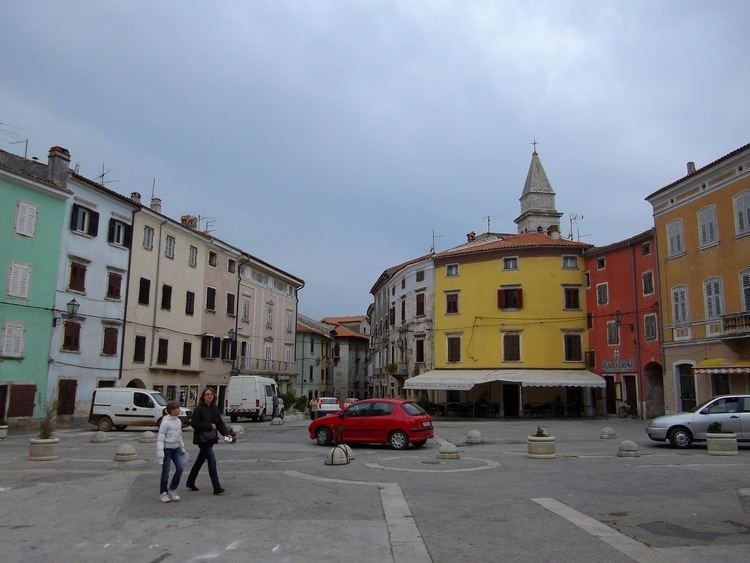Elevation 135 m (443 ft) Postal code 52215 Population 6,119 (2011) | Time zone CET (UTC+1) Area code(s) 052 Local time Tuesday 7:31 PM | |
 | ||
Weather 16°C, Wind E at 11 km/h, 62% Humidity Points of interest Ecomuseum ‑ Istrian de Dignan, Kažun Park, Parco delle casite ‑ Park Kaž | ||
Vodnjan ([ʋɔ̌dɲan] (Croat.) or Dignano (ital.) is a town and municipality in Istria County, Croatia.
Contents
- Map of Vodnjan Croatia
- Apartment vodnjan 59 vodnjan croatia awesome place
- Demographics
- History
- Towns and villages in municipality
- References
Map of Vodnjan, Croatia
Apartment vodnjan 59 vodnjan croatia awesome place
Demographics
According to the 2011 census, there are 3,613 inhabitants in Vodnjan-Dignano with total municipality population of 6,119. Municipality of Vodnjan-Dignano had one of the most diverse ethnic structures, with 3,160 Croats (51.64%), 1,017 Italians (16.62%), 425 Bosniaks (6.95%), 299 Roma (4.89%), 242 Serbs (3.95%) and 96 Montenegrins (1.57%) of total population. Montenegrins formed majority in Peroj village. 69.2% are Catholics, 14.0% are Muslims and 6.0% are Orthodox Christians. Many old native residents speak an Istriot language they call Bumbaro. These inhabitants are also called Bumbari.
History
According to the legend, it developed out of the association of seven villas which were part of the colonial goods of Pula-Pola. Dignano was known as early as Roman times as Vicus Attinianum and listed in historical records in 932 at the time of Pietro Candiniano, to whom the Istrian towns were giving amphorae of good wine in exchange of protection. Inside the historic nucleus, the town preserved its characteristic Medieval look with atria and narrow streets, irregularly winding among houses, with cobble roads and façades made of cobble stone, old streets still impressively recognizable by their Gothic, Venetian Renaissance and Baroque style and many churches rich with memories and art. Among many, in the old town there is St. Jacob Church or delle Trisiere that was designated as a parochial church as early as 1212, a church that witnessed some important historical events such as the peace agreement with Pula-Pola in 1331 and the writing of the Statute of 1492.
The large People Square in the centre of the town denotes the old place where a castle with towers was built probably in the 4th or the 5th century and torn down in 1808. The square is surrounded by important buildings such as the City Hall in the neo-Gothic style, the Benussi house, the Bembo house and the Bradamante palace with its decorated façade and an elegant triphora.
The square in front of St. Biagio church, which is the biggest church in Istria and built on remnants of an early Romanesque church that was torn down in 1781 is another important and frequently visited square. The church was consecrated in 1800 and it maintains numerous artistically and culturally valuable works, such as a custody in bas relief from 1451, wooden figures and paintings made from the 14th to the 18th centuries, works by great masters like Paolo Veneziano, Jacopo Contarini, Jacobello del Fiore, Lazzaro Bastiani, Gaetano Grezler, Avenerio Trevisano, Antonio della Zonca and others.
The sacred art collection is specialized in numerous relics and the bodies of saints, Reliquaries from Murano, habits of the saints and valuable old books. There are many frescos in other churches; St. Margaret Church (the 12th century), Our Lady Traversa Church (the 13th century), St. Kirin Church (the 6th century) or St. Fosca Church (the 8-9th century), that are destinations for today's pilgrims.
